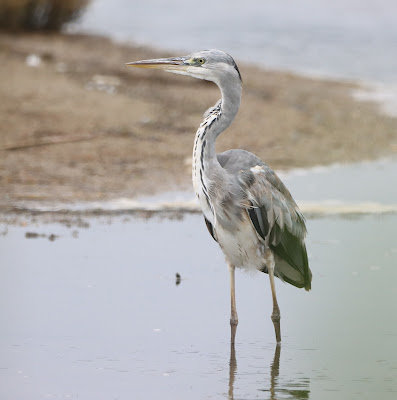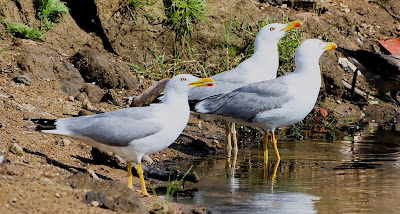Yes, it’s true. Following public demand Another Bird Blog is back. Click the Pics. You know the drill.
Four months later and following a number of stuttering, lethargic attempts I hit the keyboard to bring an update on the trials and tribulations of an ageing ringer, birder and photographer.
It all began in December last with arthritis of a dodgy ankle that kicked in during a brutal morning at Oakenclough, unsavoury conditions that continued into 2024 with the wild and windy weather of January to May inclusive. Weather “experts” paid to promote dodgy data told us that May was “dry and very warm” but high energy bills and nearby flooded fields advised otherwise.
Seeing again our Greek friends and experiencing Philoxenia in early May became Priority Number One. The pain, hurt and sheer torment of TUI and Terminal Two of Manchester Airport is not something to recommend but the thought of two weeks of Greek hospitality, Greek food and Ouzo saw us through the anguish as we finally landed at JSI, Greece some seven hours after leaving FY6.
TUI
Our Jimny awaited whereby a detour from the airport to Slaventis Supermarket provided the essentials for the first afternoon and evening in Skiathos - orange juice, 6-pack water, ouzo and Metaxa, not necessarily in that order.
Room Number 4 at Dream House was ready as our hosts the charming Efie and dad Kostas poured us a glass of ice-cold Fix, a brew that tasted like beer, not gnat piss. We swapped hugs and kisses then unpacked for tomorrow.
Dream House (Spiti Oneiro)
It was early May, when many migrant birds have already passed though Greece on their way to Northernmost Europe. March and April is the peak but as in Britain some linger while waifs, strays and residents entertain the few birders in evidence - one whole and a partly reluctant sun-loving Sue in our case.
The list is not huge but included a number of mouth watering possibilities for birders struggling back in wet and windy UK – Bee Eaters, Hobby, Marsh Warbler, Red-rumped and Common Swallows, Nightingale, Scops Owl, Little Owl, Little Bittern, Night Heron, Tawny Pipit, Red-backed Shrike, Yellow Wagtails, Wheatears and Spot Flys etc, etc.
Bee Eater
Black-crowned Night Heron
The travelling laptop tells a mixed tale of sunny, lazy days and recalcitrant birds. Not in any particular order but a taste, a feel of Skiathos.
Skiathos Town
Skiathos Town
The Greek flag together with symbols of Greece its culture and history are widespread. To mock Greece is to invite public opprobrium and worse. "Philoxenia" - φῐλοξενῐ́ᾱ meaning "friend to a stranger” is about much more than a warm welcome; it is a complex moral code with deep roots in Greek culture and Greek daily life.
Meanwhile in Western Europe and seemingly also in the US, there is an epidemic of cultural dementia coupled with a desire to obliterate our history and values. The Greek people don’t fall for such communist inspired claptrap.
Mylos Taverna
A quiet coffee morning in Papadiamantis Street
Early May at The Bourtzi
Feeding ducks
The Bourtzi
From The Boatyard
The Boatyard
The Boatyard
Mylos Taverna
From Mylos
Sleeping in Skiathos
European Shag
Grey Heron
Yellow-legged Gulls
Red-backed Shrike
Red-rumped Swallow
Whinchat
Night Heron and Little Bittern
Night Heron
It was three weeks later when deleting rubbish photos that I found the two herons just yards apart. I caught up with secretive Little Bitterns at other locations.
Little Bittern
Yellow Wagtail
Red-backed Shrike
Red-backed Shrike
Local goat. The source of creamy feta cheese.
Morning Flight
Skiathos Town
Skiathos Town
Street Art Greek Honey Bees
Ferry Arrivals, foot passengers first.
Ferry Arrivals, cars and wagons.
Queue Here
Skiathos Cat - Yuk
We arrived back in the UK mid May and found the weather had improved, even warming up, but not yet up to Greek temperatures.
A little birding, a spot of ringing became more appealing - after tidying the garden and catching up with family and friends.
Back soon. Maybe.




.JPG)





































































.jpg)












